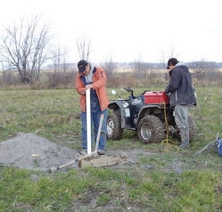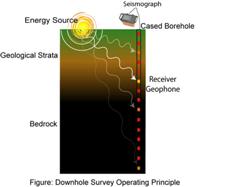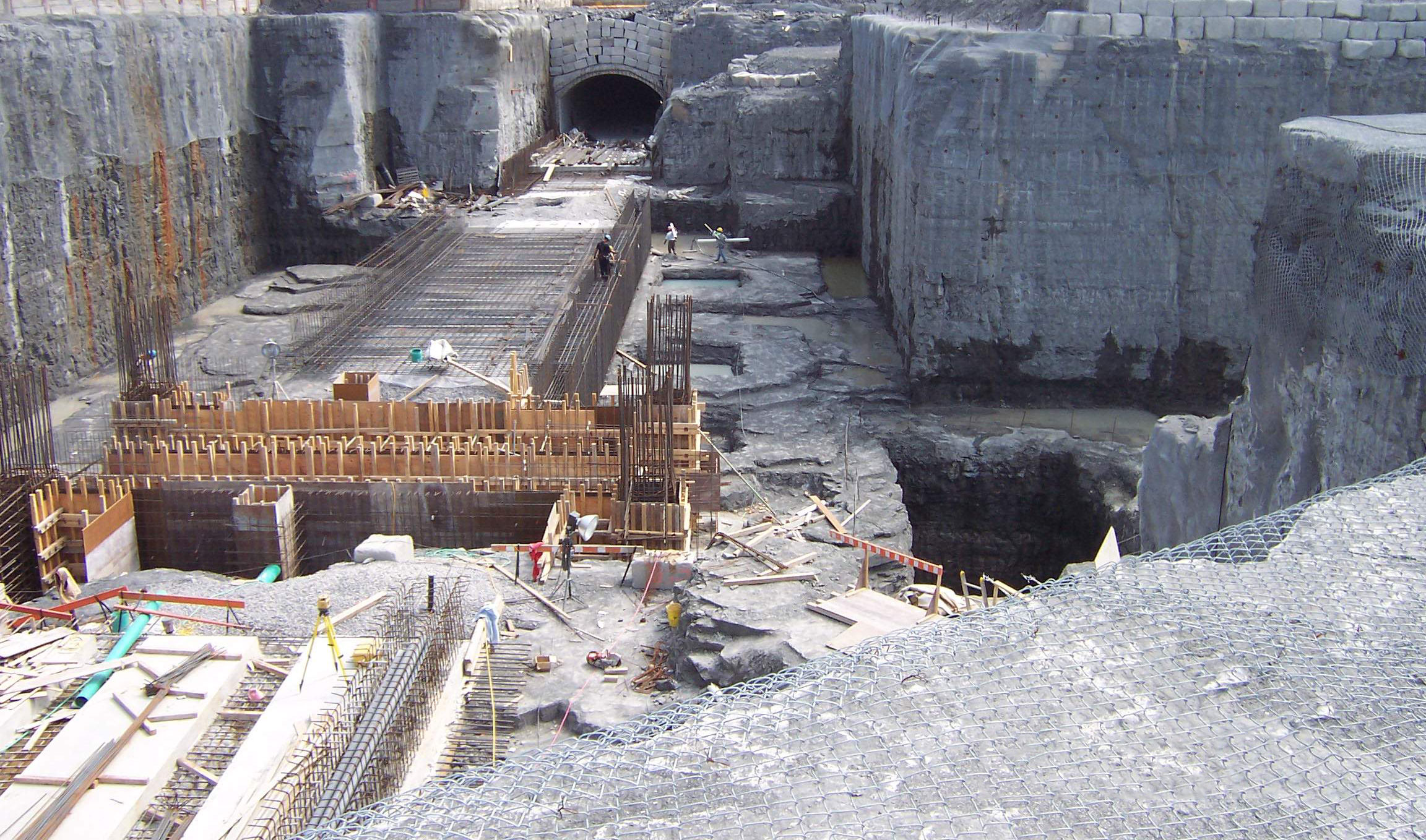Borehole seismic surveys can be carried out in several different ways. The Down-hole technique consists of measuring the arrival of seismic waves emitted from the surface in increments down the borehole. The Cross-hole technique uses a seismic source located in an adjacent borehole. The receiver in both cases is a tri-axial geophone. This enables profiles of seismic velocities from compressional (P) waves as well as shear (S) waves to be obtained. Accurate 2-D maps of seismic velocity variations between boreholes can be produced by processing the data using specialised software.
Borehole seismic techniques include down-hole, cross-hole and seismic tomography methodologies.
Typical applications of borehole seismic techniques include:
- Calculation of elastic moduli and dynamic rock and soil properties;
- Vs30 calculations for seismic site classification (National Building Code)
- Detection of faults, shear zones and voids;
- Diagnosis of problem areas in 2-D or 3-D;
- Pre and post-grouting surveys;
- Quality control tool for structural repairs;
- Quantitative evaluation of material by seismic velocity analysis ( i.e.Rippability or MRQD estimation by P-wave velocities measurements);
- Seismic shear-wave and compressional wave velocity soundings;
- Determination of rock or concrete quality through the estimation of the dynamic coefficients of the materials;
- Detection of faults and shear zones in bedrock.
For more information, please contact our Ground Survey Team.


